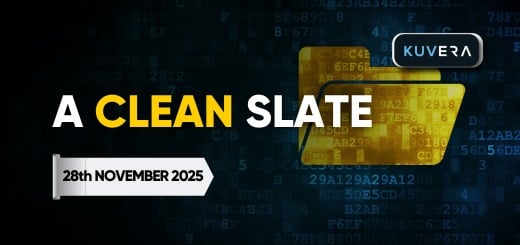A little too late is often much too late. And so, when the Reserve Bank of India finally came out of its denial mode, many commentators wondered whether its delayed action will have the desired effect.
tl;dr Hear the article in brief instead?

Welcome to Kuvera’s weekly digest on the most critical developments related to business, finance and markets.
On Wednesday, the RBI raised its repo rate—at which it lends to banks—to 4.4% from 4.0%. The shock move came barely a month after the RBI kept rates on hold at its policy meeting in April, and a month before the next scheduled meeting in June. The aim of the rate increase, Governor Shaktikanta Das explained, was to control inflation.
But why are we saying the central bank was in denial?
Readers of this newsletter would remember that we had been warning about runaway inflation for the past few weeks. Inflation breached the RBI’s upper limit of 6% in February, giving the RBI a reason strong enough to start tightening.
But Das and Company pretended the problem didn’t exist. They have woken up now, weeks after data showed inflation accelerated to a 17-month high of 6.95% in March and after signals April’s print could touch 7.5%.
What will the RBI do now? And what does it mean for common people like us?

The RBI will now have to increase rates aggressively. Some analysts predict the repo rate crossing 6% by next year. That’s a steep hike, you may wonder, and ask whether it is really necessary. So, let us try to explain it another way.
A basic personal finance lesson all Kuvera users would be aware of is that the longer you delay saving and investing for your retirement, or any other life goals, the more money you will have to save and invest when you actually start doing so. Similarly, since the RBI waited too long to act, it would now have to make an extra effort to reach its goals.
Effectively, this means that the era of home loans at less than 7% is over. Your EMIs will go higher and higher. Savers will benefit as deposit rates may rise, too. Equity investors will have to brace for choppy markets. Debt fund investors will have to be careful, too, as bond yields rise and price—as well as fund NAVs—fall.
The RBI isn’t the only one tightening its policy rates. The US Federal Reserve this week raised its benchmark rate by 50 basis points—its biggest increase in two decades as US inflation hovers near a 40-year high. Australia raised rates for the first time in a decade while the Bank of England has increased rates four times since December.
While central banks think that costlier loans will tamp down demand and cool prices, their aggressive actions could also trigger an economic slowdown—a risk India can ill afford, especially as government borrowing soars and private investment remains tepid after the battering the local economy received from the Covid-19 pandemic.
Long Covid
Talking about the pandemic, two separate reports this week provided a deeper look into the extent of the human and financial loss caused by the coronavirus.
The World Health Organization estimated that Covid-19 caused the deaths of around 4.7 million people in India during 2020 and 2021. That’s one-third of the deaths worldwide and almost 10 times the Indian government’s official count. Not surprisingly, the government dismissed the WHO figures and questioned its methodology.
Meanwhile, the RBI sought to determine the losses to the Indian economy from Covid-19 and how long it would take to recover. In a report, it said India’s economy lost an estimated Rs 19.1 trillion in 2020-21, another Rs 17.1 trillion in 2021-22, and will likely lose Rs 16.4 trillion more in 2022-23.
How soon can we recover the lost ground? By 2034-35! And that too, if the economy grows at an annual rate of 7.5% for the next 12 years. That sure won’t be easy.
A similar set of projections came from the International Monetary Fund this week. The IMF indicated that India won’t reach Prime Minister Narendra Modi’s goal of a $5 trillion economy by FY25, but may hit the mark four years later! This again depends on the economy growing 7-8% every year. The IMF also projected the rupee will fall below 94 to a US dollar by FY28, from around 76 currently.
Corporate earnings
Moving on to the corporate sector, the week gone by was relatively quiet and was dominated by quarterly earnings announcements. The only significant non-earnings development was the rumoured sale of Holcim Group companies Ambuja Cements and ACC and the emergence of Adani Group and JSW Group as potential suitors.
FMCG companies that reported earnings this week included Dabur, Britannia, Marico and Tata Consumer Products. Except Dabur, the other three companies managed to post an increase in quarterly profits. But all four expressed concerns about rising input costs and demand challenges.
Two-wheeler makers Hero MotoCorp and TVS Motor, and Tata Group’s jewellery and watch arm Titan recorded lower profits on high costs and tepid sales volume.
Tata Steel and Kotak Mahindra Bank were the standout performers this week, reporting a jump of 37% and 65% in Q4 profits, respectively.
Market wrap, IPOs

Stock markets slumped in the holiday-shortened week. The 30-stock BSE Sensex and the NSE Nifty 50 lost more than 2% on Wednesday after the RBI’s shock rate hike and fell further on Friday to extend the weekly losses to almost 4%.
Some blue-chips recorded an even sharper decline. Eicher Motors, Titan, Vedanta and Axis Bank were all down more than 10% while ITC—the perennial underachiever—was among the top gainers.
The rate hike also pushed bond yields higher. The yield on the 10-year benchmark bond climbed to 7.42%, its highest level since May 2019.
The rupee rose against the dollar to a high of 76.21, before losing ground to fall around 76.74.
In the US, the tech-heavy Nasdaq plunged 5% on Thursday, after climbing 3% the day before following the Fed rate hike, on worries that the Fed will also have to tighten aggressively, threatening the economic recovery.
In the primary markets, Life Insurance Corp, India’s biggest insurer, kicked off its long-awaited IPO that will help the government raise Rs 21,000 crore. Ahead of the IPO, LIC mopped up Rs 5,627 crore from anchor investors, including about Rs 4,000 crore from local mutual funds. The IPO was fully covered by Friday, thanks to retail investors and policyholders, though the quota for institutional investors and HNIs was yet to be completely subscribed.
Next week, the ecommerce-focussed logistics company Delhivery will launch its IPO. Like LIC, Delhivery has also cut the size of its IPO, from Rs 7,460 crore to Rs 5,235 crore.
Over the past week, capital markets regulator SEBI has given the green signal to more than a half-dozen companies to float their IPOs. But the market volatility may spoil their plans.
Other headlines
- India’s GST collections hit a record high of Rs 1.675 trillion in April.
- India’s services PMI jumps a five-month high of 57.9 in April.
- India’s manufacturing PMI climbs to 54.7 in April from 54.0 in March.
- India’s trade deficit balloons to $20.1 billion as oil price singes.
- European Union plans to phase out Russian oil imports by December.
- India’s rail freight traffic rises 9% in April.
- Maruti Suzuki’s wholesale sales fall 7% in April.
- M&M vehicle sales rise 25% in April, tractor sales jump 49%.
- Hero MotoCorp’s dispatches rise 12.4% in April.
- Bajaj Auto two-wheeler sales slide 19% in April.
- Adani Wilmer buys Kohinoor rice brand.
The week ahead
In the coming week, keep an eye on the earnings of multiplex chain PVR, Asian Paints, drugmaker Cipla, Vodafone Idea and Adani Ports.
The most significant market-related developments will be LIC’s IPO, which closes on Monday, and the Delhivery IPO, which opens May 11.
On the macroeconomic side, monthly data for retail inflation will be watched closely to gauge the RBI’s next rate action. Other key scheduled data releases include factory output and automobile sales by SIAM.
Meanwhile, temperatures are forecast to climb again in north India after a brief respite this week. This means long power cuts and coal shortages will likely persist for some time.
Until next week.
———–
Interested in how we think about the markets?
Read more: Zen And The Art Of Investing
Watch our new series on YouTube #KuveraAcademy | Your guide to smart investing Kuvera
Start investing through a platform that brings goal planning and investing to your fingertips. Visit kuvera.in to discover Direct Plans and Fixed Deposits and start investing today.
#MutualFundSahiHai #KuveraSabseSahiHai!










